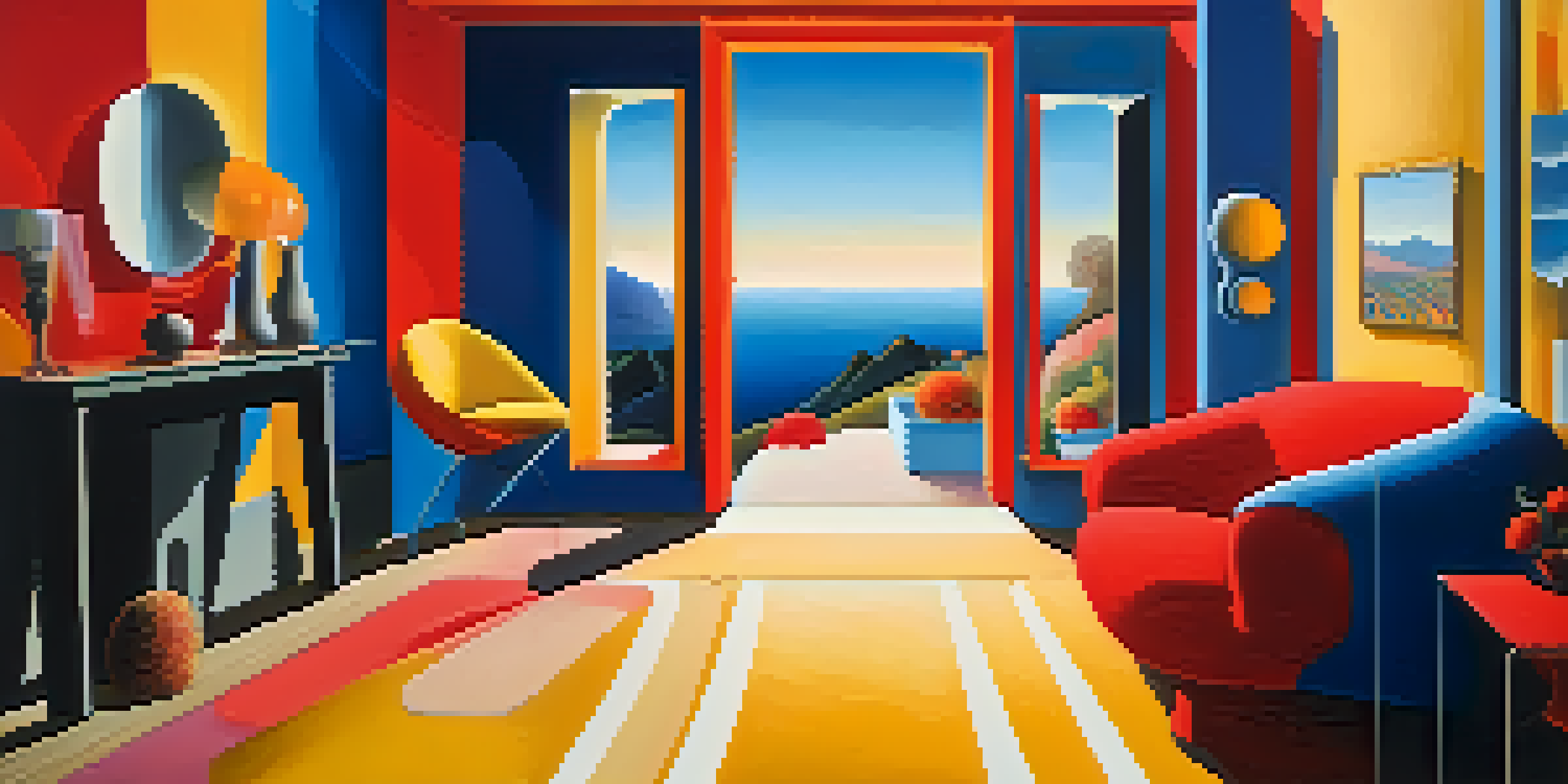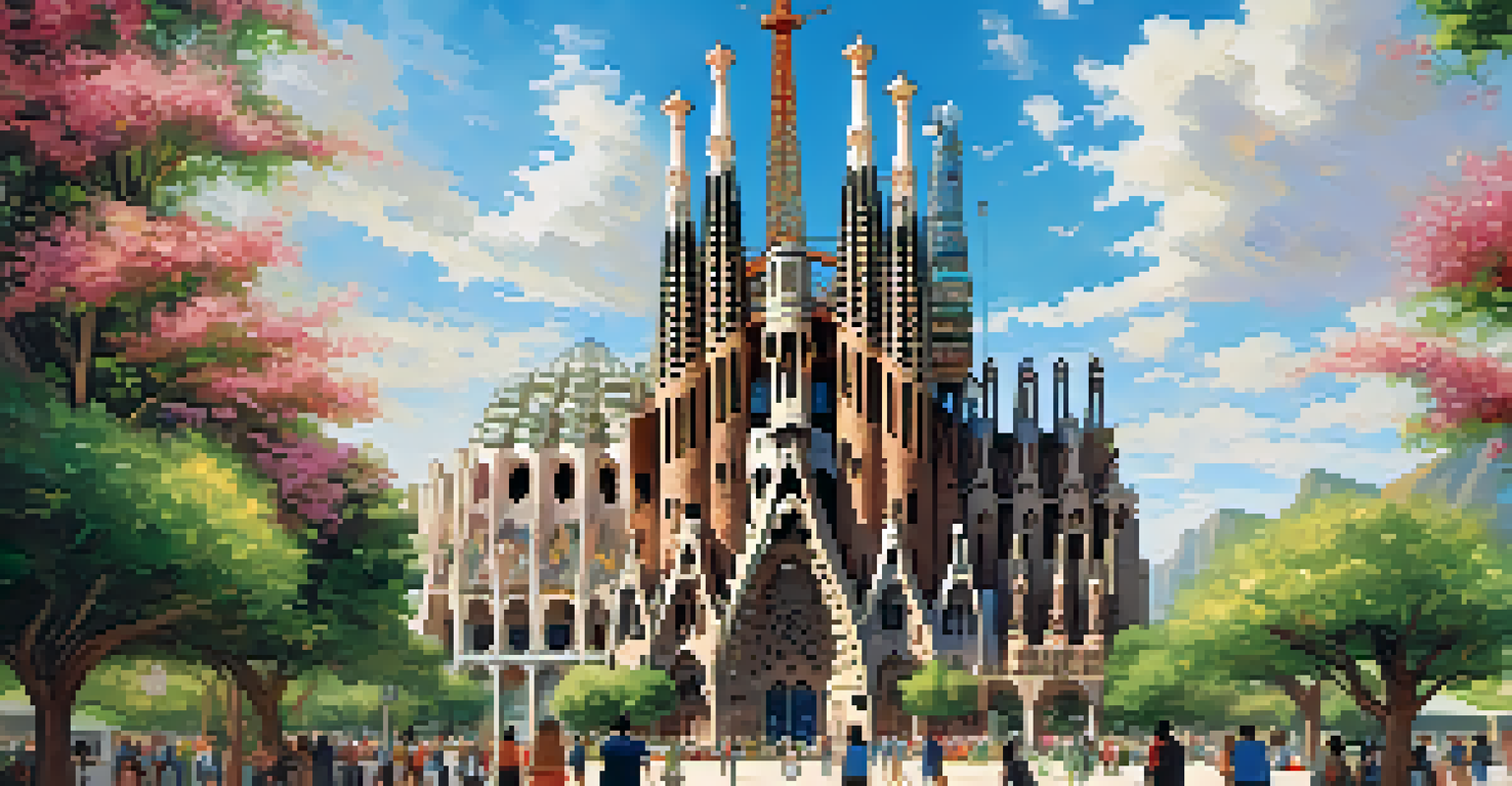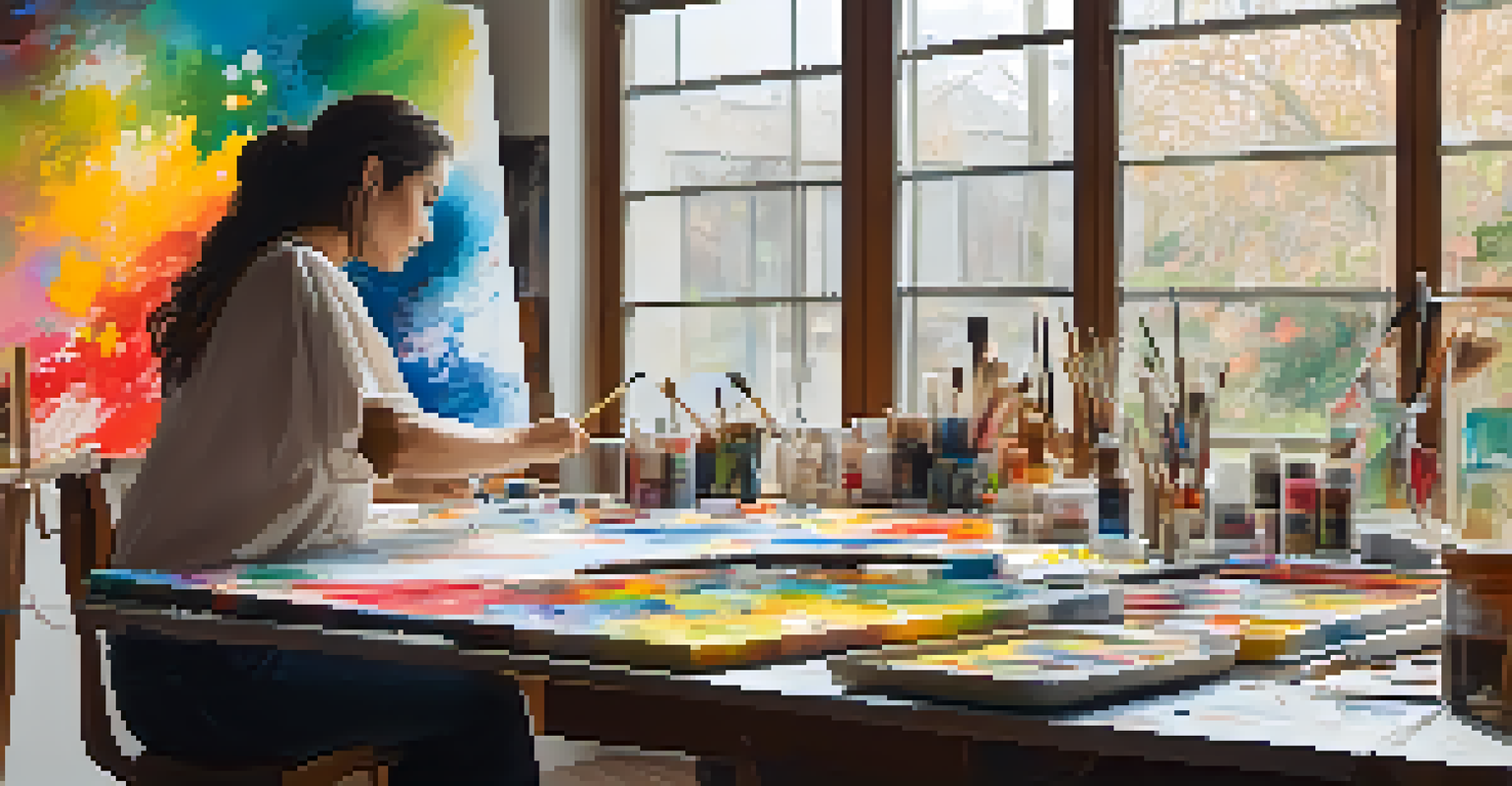Modernism in Spain: How It Shaped 20th Century Art Movements

Understanding Modernism: A New Artistic Language
Modernism emerged in the late 19th and early 20th centuries as a response to the rapid changes in society, technology, and culture. In Spain, this movement was characterized by a break from traditional forms and a quest for new expressions. Artists sought to reflect the complexities of modern life, emphasizing individual perception and experience. This shift not only influenced visual arts but also literature and architecture, introducing a fresh, avant-garde ethos.
Every act of creation is first an act of destruction.
Spain's rich cultural heritage played a significant role in shaping its unique version of Modernism. Influences from the country’s diverse history, including Moorish and Gothic styles, blended with European avant-garde movements. This fusion created a vibrant artistic landscape where traditional techniques were reimagined through a modern lens. Consequently, Spanish Modernism became a platform for experimentation, paving the way for innovations in form and content.
As we delve into the impact of Modernism, it’s essential to recognize its role as a catalyst for subsequent art movements. It laid the groundwork for various styles, including Surrealism and Cubism, which would flourish later in the century. By challenging conventions, Modernism encouraged artists to explore deeper themes of identity, reality, and consciousness. This quest for meaning would resonate throughout the 20th century, influencing generations of artists.
Key Figures in Spanish Modernism
A few notable artists stand out in the narrative of Spanish Modernism, each contributing a unique voice to the movement. Pablo Picasso, perhaps the most renowned, pushed boundaries with his innovative techniques and styles, particularly in Cubism. His ability to deconstruct forms and reassemble them in unexpected ways offered a radical new perspective on representation. This approach not only transformed the way art was created but also how it was perceived by audiences.

Another significant figure was Joan Miró, whose work embodied the spirit of Surrealism, merging dreamlike imagery with abstract shapes. Miró’s playful use of color and form invited viewers into a whimsical world, challenging the notion of reality. His art was deeply personal yet universally relatable, tapping into the subconscious and evoking emotional responses. This exploration of the inner self would become a hallmark of Modernist art.
Modernism: A Cultural Revolution
Modernism emerged in Spain as a response to societal changes, blending traditional influences with new artistic expressions.
Lastly, Salvador Dalí made waves with his striking and often bizarre imagery. His works, characterized by meticulous detail and unexpected juxtapositions, captivated the imagination of the public. Dalí’s exploration of dreams and the irrational not only defined his own style but also reflected the broader themes of Modernism. Together, these artists created a rich tapestry of creativity that continues to inspire today.
The Influence of Literature on Spanish Modernism
Literature played a crucial role in shaping the visual arts during the Modernist period in Spain. Writers like Federico García Lorca and Miguel de Unamuno explored themes of identity, existence, and the human condition, reflecting the broader societal shifts of the time. Their works resonated with artists seeking to express similar sentiments through visual language. This interplay between literature and art created a dynamic dialogue that enriched both fields.
The only difference between a good day and a bad day is your attitude.
García Lorca’s poetry, with its vivid imagery and emotional depth, inspired many painters to translate his words into visual narratives. The passion and intensity found in his verses aligned perfectly with the emotional expressiveness of Modernist art. Unamuno’s philosophical explorations also challenged artists to confront existential questions, further deepening the thematic complexity of their work.
As a result, the synergy between literature and art fostered a cultural environment ripe for innovation. This collaboration not only enhanced the richness of artistic expression but also broadened the audience's understanding of Modernism. By blending literary themes with visual representation, Spanish artists crafted a unique identity that echoed the tumultuous spirit of the 20th century.
Architecture: Modernism’s Bold New Structures
Spanish Modernism also found its expression in architecture, leading to the creation of iconic structures that defied traditional designs. Architects like Antoni Gaudí and Ricardo Bofill embraced organic forms, vibrant colors, and intricate details, pushing the boundaries of structural possibilities. Gaudí’s Sagrada Família is a prime example, blending Gothic and Art Nouveau styles into a breathtaking masterpiece that still captivates millions today.
The use of new materials and technologies played a significant role in this architectural revolution. Innovations such as reinforced concrete allowed for greater flexibility and creativity in design. This shift enabled architects to experiment with fluid shapes and dynamic spaces, reflecting the modern spirit of exploration and experimentation. The resulting buildings became more than mere structures; they evolved into works of art that harmonized with their surroundings.
Influential Spanish Modernist Artists
Key figures like Picasso, Miró, and Dalí transformed art through innovative styles and themes that explored identity and reality.
Moreover, this architectural movement was not limited to urban centers; it spread across the country, influencing public spaces and private homes alike. The emphasis on individuality and creativity in design mirrored the broader objectives of the Modernist movement, making architecture a vital component of Spain’s cultural narrative. As a result, these architectural wonders continue to inspire awe and admiration, serving as lasting testaments to the power of Modernism.
The Role of Politics in Shaping Modernist Art
The political landscape of Spain during the 20th century significantly impacted the development of Modernism. The country experienced seismic shifts, including the Spanish Civil War and the rise of Franco’s dictatorship, which influenced artists’ responses to their environment. Many sought to address the social and political turmoil through their work, using art as a vehicle for critique and reflection. This engagement with contemporary issues enhanced the emotional depth and relevance of Modernist art.
Artists became increasingly aware of their role in society, often using their creativity to advocate for change or highlight injustices. The war, in particular, served as a powerful catalyst for expression, as seen in Picasso’s iconic painting, Guernica. This monumental work captured the horror and chaos of conflict, becoming a universal symbol of the tragedies of war. Such pieces not only documented historical events but also sparked conversations about humanity and morality.
As Modernism evolved, artists navigated the complexities of censorship and repression under Franco’s regime. Some chose to adopt subtle, symbolic approaches to convey their messages, while others sought exile to continue their work. This duality created a tension that enriched the artistic landscape, leading to the emergence of diverse styles and perspectives. Ultimately, the intersection of politics and art underscored the resilience of the Modernist spirit in Spain.
Modernism’s Legacy in Contemporary Spanish Art
The impact of Modernism in Spain continues to resonate in contemporary art practices. Today's artists draw inspiration from the innovative spirit of their predecessors, often revisiting and reinterpreting Modernist themes. With a focus on experimentation and individual expression, contemporary Spanish art remains vibrant and diverse. This ongoing dialogue with the past reflects an artistic lineage that honors the revolutionary ideas of Modernism.
Moreover, the global art scene has embraced the Spanish Modernist movement, leading to a renewed interest in its key figures and works. Exhibitions and retrospectives celebrating artists like Picasso, Miró, and Dalí have sparked discussions about their relevance in today’s context. By exploring how these artists tackled issues of identity, culture, and politics, contemporary creators can engage with the complexities of modern life, just as their forebears did.
Political Impact on Art
The political turmoil in Spain during the 20th century deeply influenced Modernist artists, prompting them to use their work as a means of social critique and reflection.
Additionally, the rise of digital media has transformed how artists express their ideas, allowing for new forms of engagement with audiences. This evolution echoes the original objectives of Modernism, fostering an environment where boundaries are continuously pushed. As contemporary Spanish artists navigate this exciting landscape, they carry forward the legacy of Modernism, ensuring its influence remains alive and relevant.
Conclusion: The Enduring Impact of Spanish Modernism
In conclusion, Modernism in Spain was not just an artistic movement; it was a profound response to the complexities of the 20th century. By breaking away from traditional norms, Spanish artists forged new paths that shaped not only their own culture but also the global art landscape. The interplay of various mediums, from painting and literature to architecture, created a rich tapestry of creativity that continues to inspire.
The artists of this era navigated challenging social and political climates, using their work as a means of expression and commentary. Their legacies remain potent reminders of the power of art to provoke thought, evoke emotion, and foster change. As we reflect on the significance of Modernism, it becomes clear that its influence is deeply woven into the fabric of contemporary art.

Ultimately, the story of Spanish Modernism is one of innovation, resilience, and exploration. As we look to the future, the lessons learned from this transformative period will undoubtedly shape the next generation of artists, ensuring that the spirit of Modernism lives on in new and exciting ways.